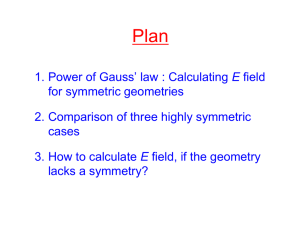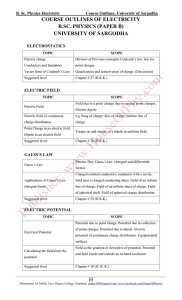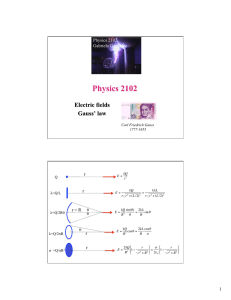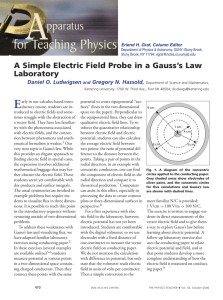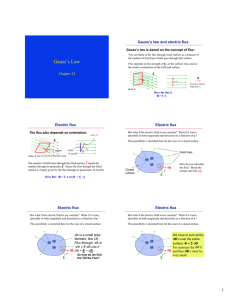• This week: parallel-plate capacitor • motion of charged particle and
advertisement
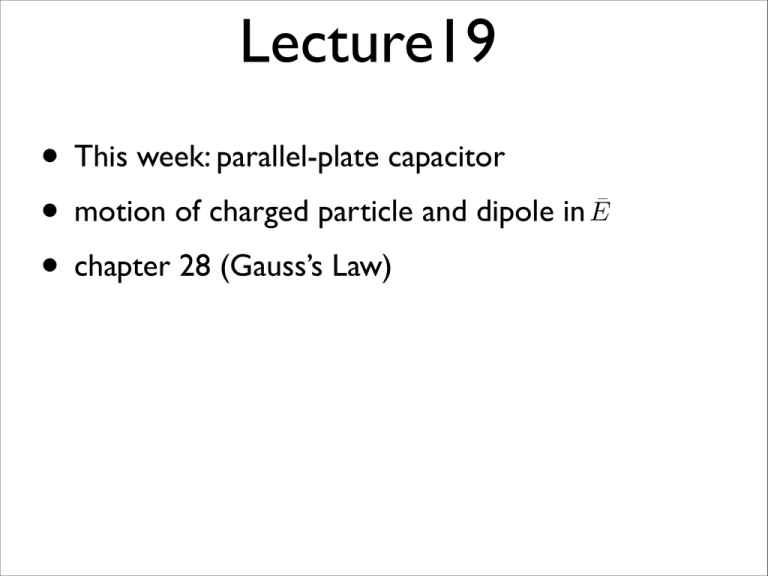
Lecture19 • This week: parallel-plate capacitor • motion of charged particle and dipole in Ē • chapter 28 (Gauss’s Law) Parallel-Plate Capacitor • 2 electrodes with charge ±Q separated by d << size of electrodes • inside capacitor Ē = 0 outside capacitor Motion of Charged Particle in Electric Field • • • Source charge creates E, other charges respond to it: F̄on q = q Ē ⇒ ā = (q/m) Ē Uniform E (a = constant): trajectory is parabola (as in gravitational field) Non-uniform field e.g. circular motion: |q|E = mv 2 r Example • The surface charge density on an infinite charged plane −6 2 −2.0 × 10 C/m is . A proton is shot straight away from the plane at 2.0 × 106 m/s . How far does the proton travel before reaching its turning point? Motion of Dipole in Electric Field • Polarization force: external charge induced dipole; attractive force on near end > repulsive...charged object attracts neutral... • Dipole in uniform E: no net force, but torque, causing it to rotate • Dipole in non-uniform E: first aligns, net force toward stronger field (toward charged object) Chapter 28 (Gauss’ Law) • Use symmetry to find geometry of Ē • For such fields, calculate Ē using Gauss’s Law • Concept of Electric Flux in Gauss’s Law • Use Gauss’s Law to understand conductors Today Symmetry (unchanged under geom. transformation ) Symmetry II • • must be... 3 fundamental symmetries Concept of Flux I • outward flux (“flow”) of Ē thru’ closed (Gaussian) surface for next positive charge inside • • inward...for...negative... no net flux...net charge Concept of Flux II • match closed surface to symmetry of Ē /charge distribution
